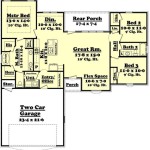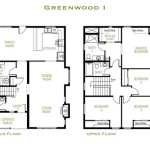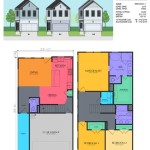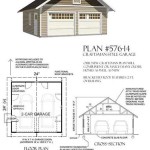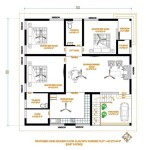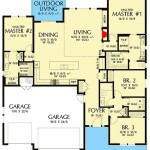Floor Plans And Interior Design
Floor plans are essential to interior design as they provide a blueprint for the layout of a space. They show the arrangement of rooms, walls, doors, and windows, as well as the dimensions of the space. Floor plans are used by interior designers to plan the placement of furniture, fixtures, and other elements within a space. They can also be used to create 3D models of a space, which can help clients visualize the final design.
There are two main types of floor plans: architectural floor plans and interior design floor plans. Architectural floor plans are typically created by architects and engineers, and they show the structural elements of a building, such as the foundation, walls, and roof. Interior design floor plans are created by interior designers, and they show the layout of furniture, fixtures, and other elements within a space. Interior design floor plans can be created using a variety of software programs, such as AutoCAD, SketchUp, and Revit.
When creating a floor plan, interior designers typically start by measuring the space and drawing the walls, doors, and windows. They then add furniture, fixtures, and other elements to the plan, using a scale to ensure that the proportions are correct. Interior designers may also use color-coding to indicate different areas of the space, such as the living room, dining room, and kitchen.
Floor plans are an essential tool for interior designers, as they allow them to plan the layout of a space and create a cohesive design. Floor plans can also be used to communicate the design to clients and contractors.
Benefits of Using Floor Plans in Interior Design
There are many benefits to using floor plans in interior design, including:
- Improved communication: Floor plans allow interior designers to communicate their design ideas to clients and contractors in a clear and concise way.
- Increased accuracy: Floor plans help to ensure that the final design is accurate and to scale.
- Better planning: Floor plans allow interior designers to plan the layout of a space and make sure that everything fits together properly.
- Reduced errors: Floor plans help to reduce errors by providing a visual representation of the space.
- Increased efficiency: Floor plans can help to speed up the design process by providing a starting point for the layout of the space.
How to Create a Floor Plan
If you are interested in creating a floor plan for your home, there are a few things you will need to do:
- Measure the space: The first step is to measure the space you are working with. This includes measuring the length and width of the room, as well as the height of the ceiling.
- Draw the walls, doors, and windows: Once you have measured the space, you can start to draw the walls, doors, and windows. Be sure to use a scale to ensure that the proportions are correct.
- Add furniture, fixtures, and other elements: Once you have drawn the walls, doors, and windows, you can start to add furniture, fixtures, and other elements to the plan. Use a scale to ensure that the proportions are correct.
- Color-code different areas of the space: You can also use color-coding to indicate different areas of the space, such as the living room, dining room, and kitchen.
Once you have created a floor plan, you can use it to plan the layout of your space and create a cohesive design.

Create Professional 2d And 3d Floor Plans

Gorgeous Guest House Floor Plans Interior Design Ideas Alisha Taylor

Create Professional 2d And 3d Floor Plans

Create Professional 2d And 3d Floor Plans

Create Professional 2d And 3d Floor Plans

House Floor Plans Your Best Guide To Home Layout Ideas Decorilla Interior Design

House Floor Plans Your Best Guide To Home Layout Ideas Decorilla Interior Design

Create Floor Plans And Home Designs

What Interior Designers Do Floor Plans Seabaugh Interiors

Gorgeous Guest House Floor Plans Interior Design Ideas Alisha Taylor

